EVENT
Ofunato City Folk Performing Arts Inheritance Festival Dec.3(Sun.),2023
- 2023
- suggested-route
- Appreciation
-
Date
2023.12.3(Sun)
-
Time
Open 10:00-14:30
-
Locate
Ofunatoshi Sanriku Community Center
-
Fee
Admission free
This is a festival where traditional folk performing arts groups from Ofunato City showcase the results of their regular activities. It also focuses on training successors, providing an opportunity for children’s groups, in addition to the youth and adult groups, to perform and refine their skills.
Hilights
A total of 12 groups dedicated to preserving and inheriting the City’s local performing arts will perform dynamic dances such as Kenbai, Shishiodori, and Shishimai.
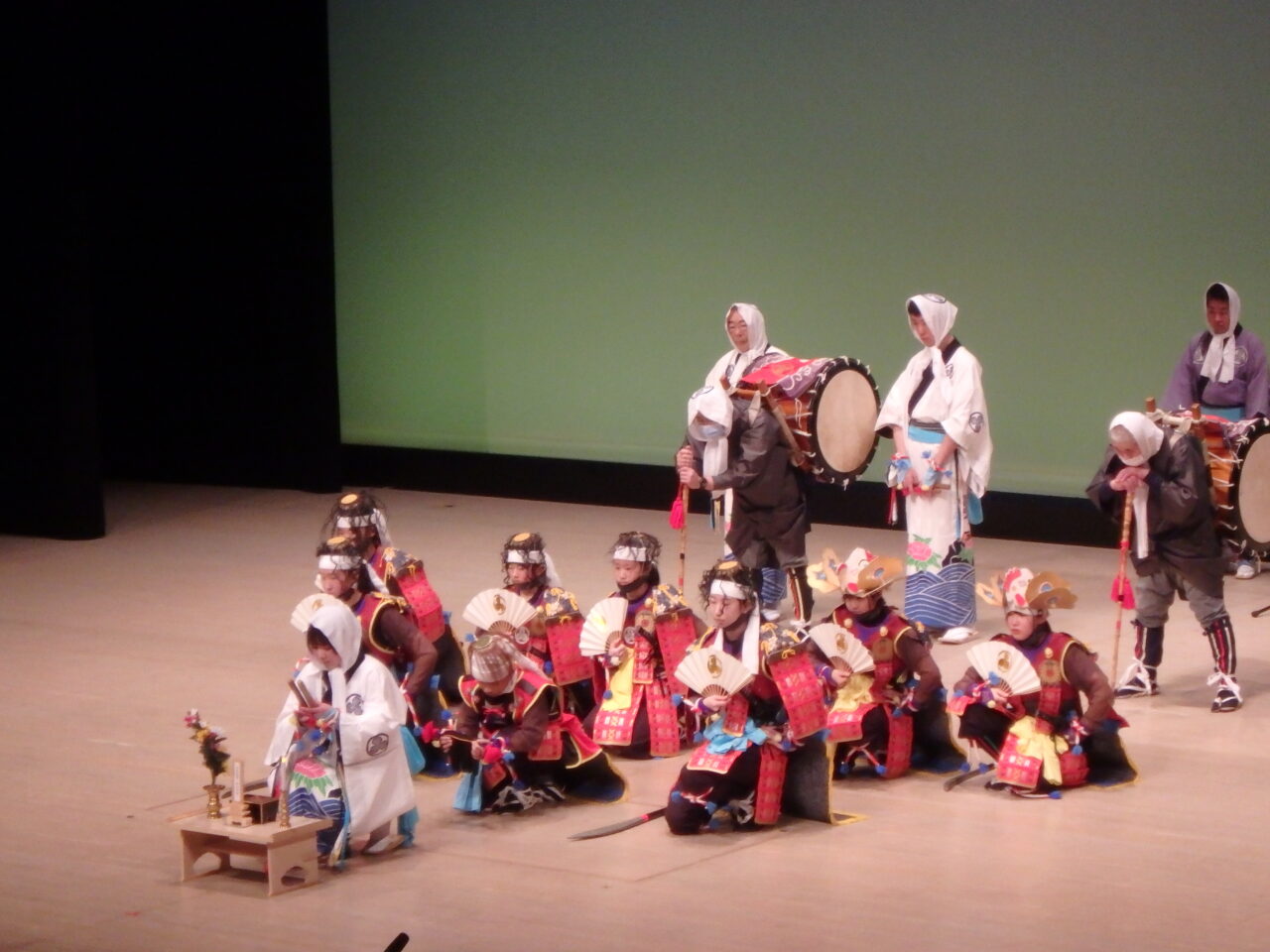
Locate
Ofunatoshi Sanriku Community Center
( 36-1, Maeta, Okirai, Sanriku-cho, Ofunato, Iwate 〒022-0101)
Access
If you’re coming to this event by train, we recommend staying overnight before.
Tokyo +++(Tohoku Shinkansen)+++Ichinoseki+++(JR Ofunato Line:BRT)+++Ofunato stay in Ofnato
| time | schedule | note |
|---|---|---|
| 07:31 | Ofunato―Sakari(07:37) | JR Ofunato Line〔BRT:Kesennuma-Sakari〕bound for Sakari |
| 08:03 | SakariーSanriku(08:29) | Sanriku Railway bound for Kamaishi |
| Go for a Stroll(Shiome)-Sanriku Public Hall | By walk. It takes 11 minutes directly from Sanriku Station to the venue | |
| 10:00 | Ofunato City Folk Performing Arts Inheritance Festival(End 14:30) | Lunch:There are no restaurants near the venue, so it is recommended that you bring your own lunch, such as a boxed meal. |
| 17:13 | Sanriku―kamaishi(17:36) | Sanriku Railway bound for Kamaishi |
| 17:44 | Kamaishi―Shinhanamaki(19:44) | Jr kamaishi Line bound for Morioka |
| 19:52 | shinhanamaki―Tokyo(23:20) | JR Tohoku SHinkansen YAMABIKO 72 bound for Tokyo |
Travel information
Shiome
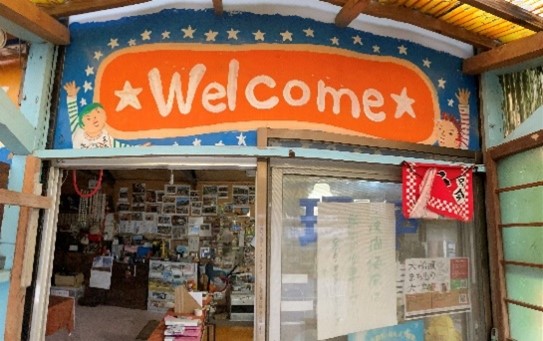
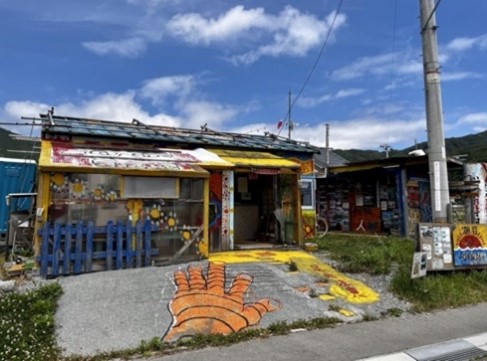
Shiome is a unique building located just after getting off the Sanriku Station. These “positive disaster remains” were jointly created by local residents and volunteers involved in the East Japan Earthquake. Named Shiome, meaning the meeting of tides, it serves as a place for interaction where people come together much like fish gathering where different sea currents collide. Open to the public as a community space, it is also known as a resting place for hikers along the Michinoku Coastal Trail, etc.
...
Adress | 30-10 Koenota Sanrikucho Okirai, Ofunato, Iwate 022-0101
TEL | 090-8780-5509(Katayama)
New Okirai
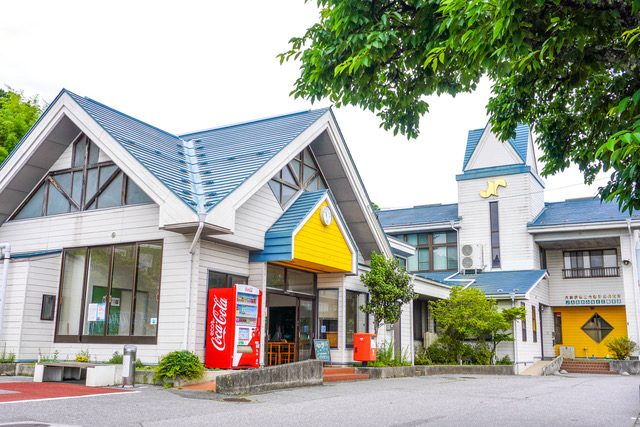
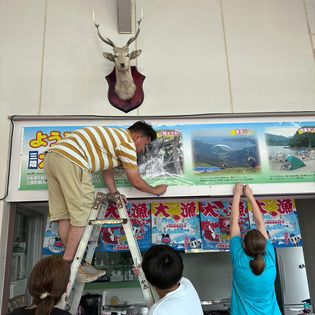
The Sanriku Railway Sanriku Station had a tourist center attached to it, which closed due to depopulation and other factors after the earthquake. In response, local residents reopened it under the name “New Okirai,” aiming to turn it into a hub for tourism and the community. Managed on a rotating basis by local residents, it operates mainly on weekends, offering coffee, light snacks, and an opportunity for enjoyable conversations with local people.
Locate | Attached to Sanriku Station
OPEN | Saturday and Sunday 9:00AM-5:00PM
TEL | 0192-22-9464 (Kira Kira Okirai) mail:info@newokirai.com
Areas
出演団体
Kawara Yoroi Kenbai
Shirahama kembai Hozonkai Preservation Society
Sugo Taueodori Hozonkai Preservation Society
Nogata Kenbai
Maeda Kyodogeino Hozonbu Group
Horei Jichikai Geino-bu Group
Akasawa Kodomo Yoroi Kenbai
Urahama Kodomo Nenbutsu Kenbai
Hira Kodomo Shichifukujin
Yoshihama Kodomo Yoroi Kenbai
Artists
-
Akasawa Yoroi Kembai
The Akasawa Yoroi Kembai was the first Intangible Folk Cultural Property designated by the city of Ofunato. It is a folk performing art native to the Akasawa village in Ofunato, and its history can be traced back to the late Edo period (1603–1868). After a period of inactivity, it was revived in the Meiji period (1868–1912). Since 1971, it has been preserved along with the “Akasawa Kyokuroku” by the so-named Akasawa Performing Arts Preservation Society. Previously, it was known as “Nugidare Kembai,” with the dancers dressed nugidare style – both sleeves unworn and hanging down – but this was changed to the present armor costume over a century ago, and the dance was renamed Akasawa Yoroi Kembai (“yoroi” meaning “armor”). This style of armor-clad dancing is unique to the Kesen region, and it was Akasawa Yoroi Kembai that laid the groundwork for it. For this and for its gallant and splendid dance that leaves viewers overwhelmed and awed, it is rightly known as the original yoroi kembai (“armored sword dance”).
-
Kawara Yoroi Kenbai
Taira clan was destroyed in Dannoura, and became ghosts of warriors to afflict Minamoto no Yoshitsune. The Kawara Yoroi Kenbai is a performance that expresses Benkei’s reading of the sutra aloud to put these ghosts of Taira clan to rest, and is danced wearing an armor and mask that represents each spirit.
Since 1772, this dance has been passed down through its repetitive complications, and in 1936, volunteers from both Kawara and Kubo districts revived the Kawara Yoroi Kenbai, which continues to this day. -
Shirahama kembai Preservation Society
The Shirahama Kenbai is said to be conveyed from Hikoroichi community, an immediate neighbor, in the early Meiji period (1868-1912). The big tsunami in Sanriku region in 1896 and 1933 damaged and deprived them of their equipment and historical documents, meanwhile the wartime obliged them a period of suspension. The preservation society was founded to revive the tradition in 1973, but it didn’t last longer than five or six years. The inactivity continued since then; no performance was held and there only remained the narratives about the kenbai by the elderly practitioners. The current preservation society was newly established with 20 active members in July 1991.
-
Sugo Taueodori Preservation Society
About 200 years ago, a person from Shimofunato community, Ofunato village visited Tanzawa district and learned a dance to bring back home, which was eventually spread as the Shimofunato Taueodori. The youngsters in Sugo and Shitakake communities, both Tatsune village, learned it and set the foundation of the Sugo Taueodori. After a period of decline, a volunteer group Kokkikai, headed by the late Mr. Yuzaburo Kin’no, made an effort to preserve. They trained hard with Shinta Sugo, 70 years old at that time, as their teacher and finally performed on streets in the village with a grand flag telling “The Taueodori Commemorating the Economic Rehabilitation of Sugo and Shitakake” on February 1, 1936. Since this first step of revival, it has been preserved until today. Now it is managed by the Sugo Taueodori Preservation Society.
-
Nogata Kenbai
It is said that this dance dates back to the feudal era, when someone from Itayo, Hikoroichi regularly visited Nogata Oya and taught it to the locals. Therefore, to understand its origin,it is appropriate to refer to the Itayo Kenbai.
During the first year of the Horeki era (1751), a Buddhist altar craftsman was invited from Kyoto to create Buddhist statues and fittings in Inagosawa, Ikawa-cho, where a vast hall was constructed. At the time, there were numerous workers in the Inagosawa family, and to promote harmony among them, the traditional Nenbutsu Kenbai dance from Esashi was introduced and taught to the locals. It was combined with customs from Kyoto festivals and elaborated as Kataikari Kenbai.
In Horeki 2 (1752), a branch was established in Itayo, and all the costumes for the Inagosawa family’s Kenbai were donated to Itayo.
It is said that this was done with the intention of being passed down for generations.
Zenzo Goto, born in 1845, led a group of more than 30 young people from the community. For over half a century, until Meiji 45 (1912), they danced in various places, including Nogata, Chorin-ji Temple, Chouan-ji Temple in Hikoroichi, and Moryo in Akasaki.
After a hiatus of 20 years, the Nogata Kyourakukai decided to inherit the tradition, and with the dedication of its members, the dance was revived. In Showa 11 (1936), it was performed throughout the entire Ryori Village, comforting the spirits of ancestors, and the tradition has continued to the present day. In 2000, it was designated as an intangible folk cultural asset by Ofunato City. -
Horei Jichikai Geino-bu Group
A terrible tsunami struck the Sanriku region during the Ansei era (1855–1860) , followed further by crop failure, causing enormous damage. Yamabushi (mountain priests) who lived on Mt. Haguro in Yamagata Prefecture arrived in the region to offer prayers, bringing a shishigashira (wild animal headpiece) – a symbol of the fierce spirit of the gods – as a host for the gods, carrying it to the region on their back inside a sacred box.
Locals of the time, who had suffered from the tsunami and poor harvest, brought the shishigashira out and danced in a spontaneous fashion. However, it remains unknown when the current dance style began.
The present-day shishimai is a valorous dance like no other, with bold vertical motions, side-to-side leaps and a biting action using the headpiece’s mouth. -
Maeda Shishiodori Preservation Society
It is said to have been during the Jokyo era (1684–1688) that the Maeda Shishiodori was taught by Zenkuro, who was a disciple of the supposed originator of the shishiodori, Shirobei of the Motoyoshi district. If this is true, then the dance is the earliest introduction of shishiodori in the city. There survives a scroll that identifies the dance with the Gyozan School, calling it “Gyozan School, Motoyoshi Style.” The scroll records tales related to the style of the dance, and details about how it was introduced and handed down in the region. Though popular in the first half of the Meiji period (1868–1912), it later declined, and from late Meiji period to Taisho period (1912–1926), it was only taught in the Sano area in Akasaki village, and the Kunabatake area in Ikawa village, eventually dying out. It continued to be inactive until the revival of the present-day Maeda Shishiodori in 1977.
-
Akasawa Kodomo Yoroi Kenbai
After the fall of the Heike clan at the Battle of Dan-no-ura, the Minamoto clan was haunted by the vengeful spirits of the defeated Heike. During such a troubled time, a venerable monk appeared and chanted Buddhist prayers to calm the spirits.The Akasawa Yoroi Kenbai is based upon this story.
The Akasawa Kodomo Yoroi Kenbai is performed by members of the Karajishikai, an activity club integrating local performing arts introduced for the first time in elementary schools across the Prefecture in Heisei 25 (2013), led by the Ofunato Kita Elementary School Folk Performing Arts Club, and its alumni, junior and senior high school students. -
Urahama Kodomo Nenbutsu Kenbai
The Urahama Nenbutsu Kenbai was revived by the Urahama Youth Association in Showa 47 (1972), and a preservation society was formed to pass down the tradition.
As concerns later arose about the continuation of the tradition due to changes in the youth association and a decrease in the number of preservation society members, the Urahama Kodomo Nenbutsu Kenbai was formed around 1990 to overcome this crisis.
Due to the impacts of the declining birthrate and depopulation, securing successors among children has become challenging. Nevertheless, they dance with great effort, so please enjoy their performance. -
Hira Kodomo Shichifukujin
The Hira Shichifukujin was passed down from Hirota-cho in Rikuzentakata City at the beginning of the Showa era (late 1920s), originating in the Hira region where many people owned boats, and is said to have started as a dance for praying for a bountiful catch. The dance has been performed since kong ago at the Kamo Shrine’’s Shikinen imperial memorial ceremony (five-year festival).
Typically, boys in the 5th and 6th grades of elementary school and those in junior high school perform the dance, while students in the 3rd and 4th grades perform the taiko drums, and adults and girls play the flute.
Please enjoy the energetic Shichifukujin performed by the children. -
Maeda Kodomo Shishiodori
The Maeda Shishiodori is said to have originated approximately 330 years ago, passed down from Iriya in Minamisanriku-cho, Miyagi Prefecture. At the time, the Kesen region was prosperous from gold mining, and the gold miners introduced the Shishiodori.
The dance style is known as “Gyozan-ryu,” and one of the representative performances is called “Sannin Gurui.” This dance depicts a story where three male deer compete for a female deer, and in the end, one male deer emerges as the victor. -
Yoshihama Kodomo Yoroi Kenbai
The Yoshihama Yoroi Kenbai is known as the “Gashi Kenbai” (gashi meaning “famine”) because it began as a memorial service for those who died of starvation in the Tenmei and Tenpo eras, and it is also referred to as the “Hane Kenbai” (hane meaning “jumping”) due to its intense movements.
It stopped being performed during the Pacific War, but around Showa 23 (1948), young enthusiasts from the Uedori settlement worked to bring it back, and since then, it has been passed down to the present day.
The “Sakimai” is a slow dance, the “Nakamai” is a bit faster, and the “Hikimai” where the two main dancers dance vigorously, is the highlight of the performance.
Contact
Ofunato City Folk Performing Arts Revitalization Project Executive Committee
Mail:f-ofnt@ofunato-fm.com
Sanriku International Arts Festival 2023
-JAPAN CULTURAL EXPO 2.0
Organized by|Sanriku International Arts Committee, Japan Arts Council, and Agency for Cultural Affairs, Government of Japan

Co-organized by|Hachinohe City, Hashikami Town, Hirono Town, Kuji City, Noda Village, Fudai Village, Tanohata Village, Iwaizumi Town, Miyako City, Yamada Town, Otsuchi Town, Kamaishi City, Ofunato City, Rikuzentakata City, Sumita Town, Sanriku Railway Co., Ltd., Japan Folk Performing Arts Association, NPO Iwate Arts Support Center, and NPO Japan Contemporary Dance Network
Cooperated by|NPO Michinoku Trail Club, imajimu LLC, Tohoku Cultural Property Video Research Institute, Minna no Shirushi LLC